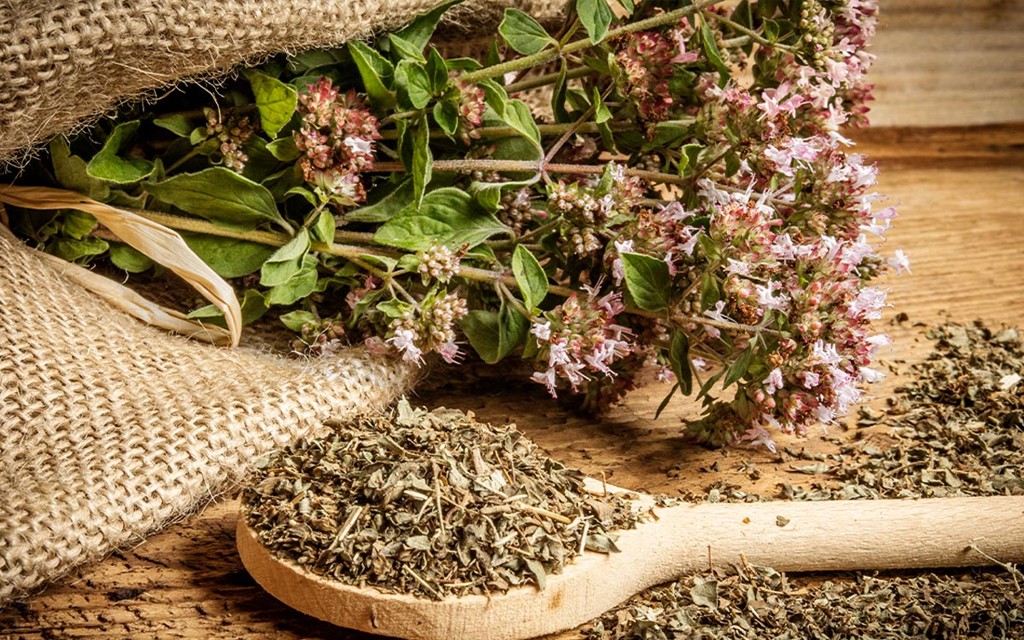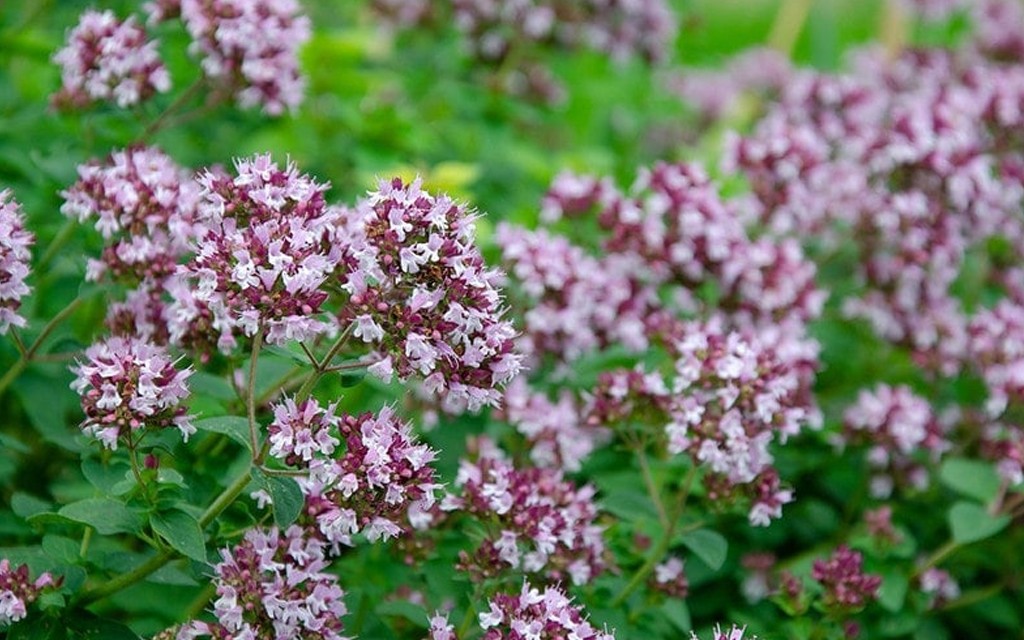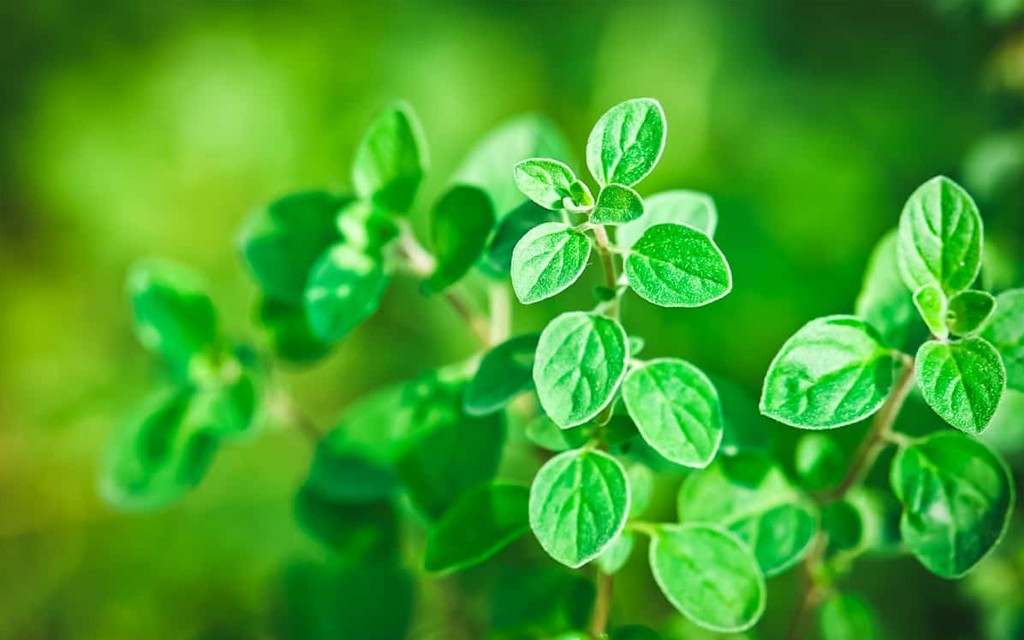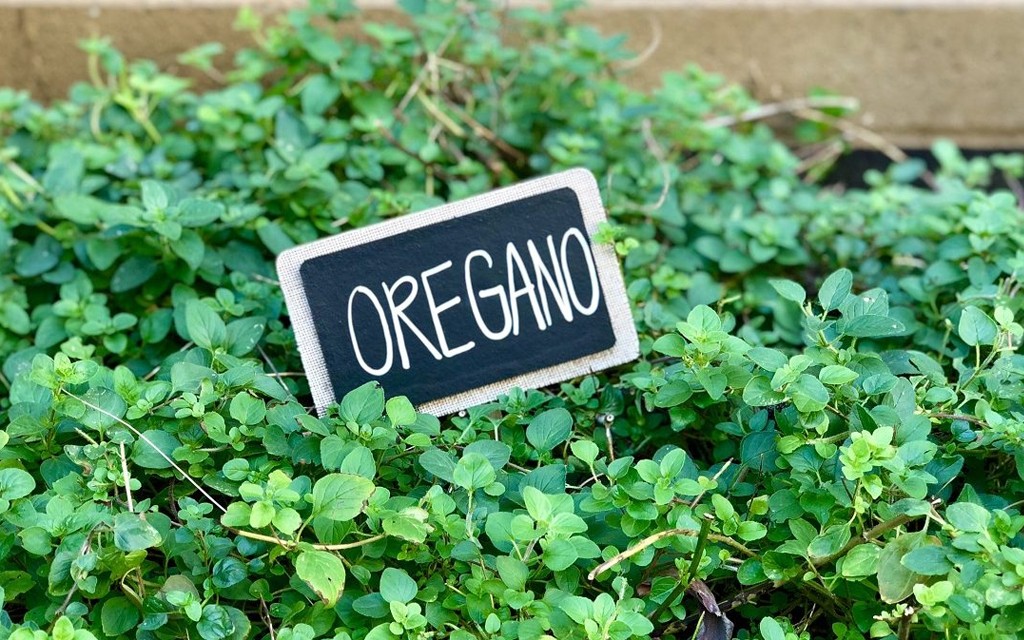Oregano
Overview
Oregano, whose scientific name is Origanum vulgare L, belongs to Labiatae. Origano is a perennial semi-shrub or herbaceous plant, aromatic, rhizome oblique, woody. The stems are up to 60 cm high, quadrangular, often without leaves near the base. The leaves are petiolate; the back is nearly round and pilose; the leaves are oval or oblong-ovate; the apex is blunt or slightly obtuse; the top is bright green, often with a purple halo; the bottom is light green. The bracts are primarily sessile, inflorescence Corymb-like panicle, multi-flowered and dense, composed of spikelets. The bracts are sharp, green, or with a purple halo, calyx bell-shaped, corolla purplish red, light red to white, tubular bell-shaped, hermaphrodite corolla. The crown eaves are obviously 2-lipped, filaments filiform, flat, glabrous, anthers ovoid, styles slightly beyond stamens, and lobes subulate. Nutlets are oval, flowering in July-September, and fruiting in October-December.
Oregano is acrid and slightly bitter with cool nature.
Oregano can regulate energy flow, clear heat flu away, dispelling dampness toxin.
Oregano, the whole herb, is used for wind-heat flu, summer-heat and dampness flu. It also can be used for bloated stomach, abdominal pain, vomiting, diarrhea, dysentery, jaundice, edema, leukorrhea, malnutrition in children, measles, skin itching, swelling, the pain of sores, and bruises. Its function of expelling cold is better than mint.
Oregano tea: prepare 3-9 grams of dry oregano, put it into the pot with 1.5-liter water, boil it with a strong fire, keep it boiling with a weaker fire for about 5-10 minutes, and drink the tea after it cools down twice daily after meals.
External application: pick up the appropriate amount of fresh oregano and make oregano tea as the way above for washing. You also can smash it and cover the sick area of the skin for about 24 hours.
For business: The whole plant can also extract aromatic oil, fresh stems and leaves contain 0.07-0.2% oil, dry stems and leaves contain 0.15-4% oil, oil specific gravity (15°C) 0.868-0.910, optical rotation (20°C) -20°-70°, The alcohol content (calculated as vanillyl alcohol) is 2-3%, and the phenolic content (calculated as thymol) is about 7%. In addition to being used for the deployment of essence, it is also used as an ingredient for distiller's yeast. In addition, it is a good honey plant.
Pharmacological research
- Anti-microbial effect:
- Oregano volatile oil is effective against Shigella flexneri, Shigella sonnei, Shigella, Staphylococcus aureus, Staphylococcus albus, Escherichia coli, Salmonella typhi, Salmonella paratyphi, Proteus The minimum inhibitory concentrations of the ml, thymol and carvacrol obtained from the volatile oil also have a significant inhibitory effect on the bacteria mentioned above, and the minimum inhibitory concentration is in the range of 0.25-0.55mg/ml. Oregano volatile oil also inhibits Pseudomonas aeruginosa, and the minimum effective concentration is 1.0 μl/ml. The volatile oil is highly toxic to chicken embryos, so it has no inhibitory effect on the influenza virus and adenovirus at a non-toxic concentration of chicken embryos.
- The effect on smoothing muscle: Oregano volatile oil has no obvious effect on the active contraction of rat isolated intestine and the contraction caused by barium chloride (BaCl2), but has a weak antagonistic effect on the contraction caused by acetylcholine. It has also been reported that the total volatile oil of oregano has an antispasmodic effect on isolated intestinal smooth muscle, which may be directly acting on intestinal smooth muscle (antagonizing BaCl2) and antagonizing acetylcholine and histamine. Antispasmodic effect It also has a certain effect on relieving symptoms such as abdominal pain and diarrhea in patients with bacillary dysentery. The total volatile oil relaxes the smooth muscle of the body, has different effects on the blood pressure of different species of animals, and can reduce the blood pressure of rats, but has almost no effect on the blood pressure of dogs and cats. Although the total volatile oil can expand the isolated guinea pig bronchus, the effect is weak and has no antiasthmatic effect. Volatile oil 5×10(-5)g/ml can significantly increase the perfusion flow of isolated rabbit ear vessels; 2.5×10(-5)g/ml can reduce the blood pressure of anesthetized rats by an average of 2.7±1.6kPa within 1h ( 20.5±12mmHg). In the isolated aortic strip experiment of rabbits, volatile oil could not antagonize the vasoconstrictor response of norepinephrine, but atropine could antagonize the antihypertensive effect of volatile oil on rats, suggesting that the antihypertensive effect may be caused by exciting M receptors.
- The effect on immune function: Mice fed with oregano extract significantly increased the phagocytic index and phagocytic rate of peritoneal macrophages. Oregano was fed to mice once a day for 5 consecutive days, which significantly enhanced the specific humoral immune function indexed by hemoglobin response; extremely significantly promoted the function of rosette-forming cells, suggesting that it can also enhance cellular immunity Features. Oregano volatile oil 50mg/kg was injected intraperitoneally into mice, once a day, for 7 consecutive days, which significantly increased the rosette formation rate of peritoneal macrophages YC (yeast-C36) and EA (immunoglobulin G-sheep erythrocytes), significantly enhanced the phagocytic function of peritoneal macrophages, significantly increased the weight of the spleen of mice, but had no significant effect on the weight of the thymus. It suggested that the anti-infection effect of oregano was related to enhancing the function of macrophages.
- Other effects: Oregano volatile oil was administered to mice at 0.15ml/kg and 0.30ml/kg, and it had a significant inhibitory effect on the writhing reaction caused by acetic acid, and it was in a dose-effect relationship. The subthreshold dose of appropriate sodium has a significant hypnotic impact and a synergistic effect and has an apparent sedative effect on mice. Oregano extract also has powerful antioxidant effects. The tincture has a pronounced diuretic effect. It can increase urine output and excretion of chloride in urine and is used as a diuretic and sweating agent among folks. The infusion can relax the bowel, promote appetite, improve poor digestion, and has an expectorant effect.
- Toxic and side effects: The acute LD50 of oral total oil in mice is 2.43±0.38ml/kg (1ml is about 900mg), and the clinical dosage is 40-80mg per day, so the safety range is relatively large. It was also reported that the LD50 of volatile oil in mice was 4.479±0.368ml/kg. The volatile oil was given to mice with 20ml (10mg/kg oil) orally for 3 consecutive weeks, and no abnormalities were found in the major organs with naked eyes and tissue sections.
When you subscribe to the blog, we will send you an e-mail when there are new updates on the site so you wouldn't miss them.

















Comments